Pietro Metastasio da
Roma a Vienna (1730-1782)
A Biography in English
Pietro
Metastasio is the poet of the melodrama in the
eigtheenth century. A giant of the musical theater in
Italy and in Europe, he not only establishes Italian as
the universal language of the most widespread and
popular artistic spectacle of his age, he also furnishes
the inspirational and expressive model for whole
generations of musicians who try their hands at Italian
opera.
The birth of
Pietro Trapassi (known artistically as Metastasio)
occurs under good auspices: he is baptized at the hands
of the cardinal Pietro Ottoboni. The powerful cardinal,
a nephew of Pope Alexander VIII, a patron of the arts in
Rome between the seventeenth and eighteenth centuries,
exercises a constant protection over Pietro, the son of
a modest merchant. This protection is so constant, in
fact, as to cast some doubt on the authentic paternity
of the future Hapsburg court poet--whether we compare
portraits of Ottoboni executed by Francesco Trevisani
with one painted of Metastasio by Pompeo Batoni, or read
Montesquieu’s incisive sociological-anthropological
analysis in his Voyage d’Italie (1724-26)
of sexual customs, marriage, the role attributed
to women in Rome at the time, and the cardinal himself.
All of these circumstances entrust the education and
formation of the adolescent Pietro to Gian Vincenzo
Gravina, one of the founders, along with Ottoboni
himself, of the Accademia dell’Arcadia.
At Gravina’s
school the young Metastasio studies not only Homer, the
Greek tragedies, Cicero, Virgil, Horace and Seneca,
Ariosto and Tasso (and, in secret, Giovanbattista
Marino, of whom Gravina disapproved), but, with the
revival of the work of Dante Alighieri, he also
discovers the ethical and political dimension of the
Italian literary tradition, placed at the basis of the
social function of poetry and literature, that is, for a
return to the composition of tragedies. At only
fourteen, Pietro, in his tragedy Giustino (1718;
Justin), modelled on Gian Giorgio Trissino’s
L’Italia liberata dai Goti (Italy Liberated from
the Goths), combines the mission of the future
emperor of Byzantium, who is called to restore Italy to
the Roman Imperium, with a love for Sofia, a niece of
the empress Theodora. The union of individual affective
desires and foundational values involving the common
good and good government constitutes the center
of Pietro Trapassi Metastasio’s entire dramatic ouevre,
which is destined for the musical theater--from
melodramas and theatrical festivals to oratorios. In
Naples he publishes his first work, Poesie di Pietro
Metastasio (1717; Poems by Pietro Metastasio),
which along with Giustino and other compositions
bears the signature of his new surname. Dedicated to
Aurelia Gambacorta d’Este, the wife of one of the
leaders of the anti-Spanish plot of Macchia in 1701, and
herself an exponent of the philo-Austrian Neapolitan
aristocracy, the collection lays the groundwork for the
poet’s move to the city in which the Dantean dream of
his teacher (the unity of Italy under the two suns of
Faith and the supreme Roman authority of the
Hapsburgs) seems to be realized with the vice-regency
established by the Hapsburg emperor Charles VI in
Naples.
With Gravina’s
sudden death at the beginning of 1718, Metastasio, after
failed attempts to launch a literary career in Rome,
leaves for Naples in the summer of 1719. Here he puts
himself at the service of the nobility of the Austrian
vice-regency, both for theatrical festivals at the
palace and for public spectacles meant to bridge the
historical, cultural, and anthropological separation
between the ruling classes and the people,
demythologizing–in the manner of Giambattista Vico–the
archaic superstitions of the rural world and propounding
the civilization of social customs. This is the social
function expressed by Endiminione (Endymion),
Angelica (Angelica), Gli orti esperidi
(1721; The Gardens of the Hesperides), and
Galatea (Galatea), operas that permit both
the sharing of expectations between the commissioners
and audiences of the theatrical festivals, and the
integration of poetic composition and musical song. The
Neapolitan school of music--from Alessandro Scarlatti to
the young Niccolò Porpora and his favorite student, the
sopranist Carlo Broschi “Farinelli” (Metastasio’s
“sweet twin” in Naples), from Domenico Sarro to Leo
Vinci–elects Metastasio as their poet of opera seria.
The social and
political function of Metastasio’s poetry for music
appears in the melodrama Didone abbandonata
(1724; Dido Deserted), thanks to the dramatic
characterization of the Virgilian heroine, who is
represented almost as a proto-feminist. Staged at the
Teatro San Bartolomeo, it achieves success with the
singer Marianna Benti Bulgarelli, the “Romanina,” in the
role of the protagonist, and with music by Domenico
Sarro. Breaking from the traditions of baroque opera
(the theater of the marvellous, plot twists, the mixing
of tragic and comic elements) and the role of the woman,
who is paradoxically defeated precisely when she affirms
her autonomy and independence as an individual,
Didone abbandonata is the first and last of
Metastasio’s melodramas in which passion is not governed
by value, that is by moral virtue. In his next
melodramas, both in Venice and Rome (1728-1730), and in
Vienna, from Demetrio (1731; Demetrius) to
Ruggiero (1771; Ruggiero), Metastasio
clings to the aesthetic criterion expressed in the
Estratto dell’arte poetica d’Aristotile e considerazioni
su la medesima (An Excerpt from Aristotle’s
Poetics and Some Considerations on the Same)
according to which the truthful representation of
characters able to affirm values like magnanimity,
justice, forgiveness, patriotism (which generate a
pedagogical pleasure in the spectators), is preferable
to required catharsis or the purification of
evil, which is provoked through terror and
pity, sentiments prescribed by a mechanical
interpretation of the Aristotelian conception of
tragedy.

Laxenburg - Neues Schloss
Even before
systematizing his aesthetic conception of melodrama in
Vienna, Metastasio, from Siroe (1726; Siroe)
to Catone in Utica (1728; Cato at Utica),
Ezio (1728; Ezio), Semiramide
(1729; Semiramis), Alessandro nell’Indie
(1729; Alexander in India), and Artaserse
(1730; Artaxerxes), employs the
hedonistic-pedagogical criterion in his dramas with a
happy ending (with the exception of Catone in Utica,
in order to respect the historical truth of the
protagonist’s sacrifice), along with admiration
and emulation, which is generated in the
spectators by the positive dramatizing of values/virtue,
which prevail over the contrasting passions and
conflicts among human beings. In the Naples of the
Austrian viceregency, Metastasio shares, along with
Pietro Giannone and Giambattista Vico, the intellectual
function of representing a possible moral and civil
reform of customs in a city that is not dominant,
which is to say deprived of its own autonomous political
center; in papal Rome, he meets with spirited popular
approval and theatrical impresarios, who are contested
by curial factions. In 1730 he comes to the Vienna of
Charles VI and to a court that will make him the symbol
and image of a civil, social, and political life which
the post-feudal organism of the Empire intends to
modernize and reform. Living in Vienna for the rest of
his life, until 1782, he learns German to the extent of
knowing the “few words needed to survive,” as he
confesses to Charles Burney, who in September of
1772 comes to visit him at his house in front of the
Hofburg [Charles Burney, The Present State of Music in
Germany, the Netherlands, and United Provinces, edited
by Percy A. Scholes, Oxford University Press, 1959].
The production of Demetrio, the first Viennese
melodrama to celebrate the onomastic of Charles VI, 4
November 1731, demonstrates the importance attributed to
Italian, Metastasio’s poetic language, for the
compositional and communicative function, both
theatrical and musical, of opera seria. The entire
social universe of Vienna, from the court to the
inhabitants of every class and social rank, is
irremediably attracted by Italian verses within the
rational dramatic distribution of scenes.
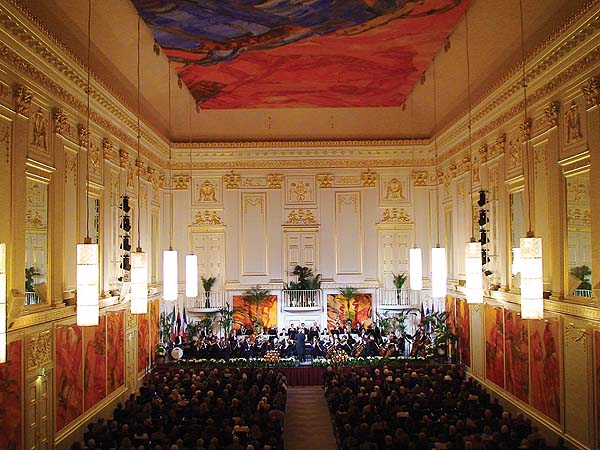
Hofburg - Redoutensaal
In the decade
1731-40, the understanding between Charles VI and his
court poet assumes form in that admiration des héros,
as the “contagion of heroism,” through which Metastasio
introduces in the spectators the pleasure of tears and
the emotion that develops virtue, both of which refer to
the inspiration of the political deeds of Charles VI.
In the dramas, theatrical festivals, and oratorios, we
see the grandeur of existence with the resolution of
suffering, pain, and passion into values meant to
promote the life of every subject, his happiness,
along with the public happiness and hence that of the
emperor himself. Thus emerge masterpieces like
Adriano in Siria (1732; Hadrian in Syria),
L’olimpiade (1733; The Olympiad),
Demofoonte (1733; Demofonte), La clemenza
di Tito (1734; The Clemency of Titus), up
until Attilo Regolo (Attilius Regulus),
which in 1740 takes Charles VI as the model of patriotic
virtue to be emulated, with his total dedication to the
common good of the people whom he rules represented in
the extreme sacrifice of the Roman consul. Attilio
Regolo is staged in Dresden, ten years later, in
1750, because in 1740 Charles VI dies suddenly, leaving
the task of saving the Hapsburg Empire to his daughter,
Maria Theresa, in the war of the Austrian succession.
After his most fertile artistic period, there follows a
period of absence from Vienna because of war and
epidemics, while Metastasio’s operas, together with the
court Kappellmeister (Antonio Caldara, Francesco
Conti, Georg Reutter, Luc’Antonio Predieri, Giuseppe
Bonno), are staged in all the European cities, from the
courts to the public theaters, following the deliberate
choice of composers such as Vivaldi, Handel, Jommelli,
Gluck, Hasse, Haydn, and Bach. Thanks to these men, and
later to Mozart, Salieri, Schubert, and Beethoven, music
becomes an intrinsic form of poetry, both for the
attraction exercised on notes by the rhythmic-phonetic
exemplarity of Metastasian poetry (a unity that dates
back to the song or melos of Greek tragedy), and
for the ethical, religious, dramatic, and spectacular
connotation of the court poet’s opera seria, whose music
underlines emotions, sentiments, and passions,
accompanying them until they are dramatically
transformed into positive values. Approbation,
admiration, and enthusiastic judgments are expressed for
Metastasio’s Italian opera by almost all of the artists,
writers, and philosophers of the century.
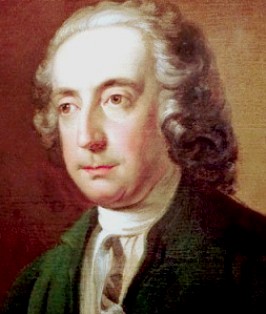
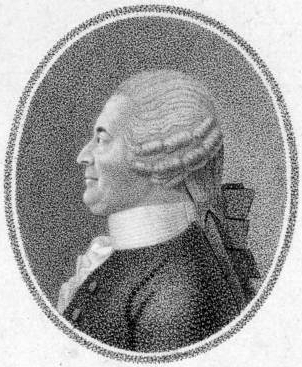
Antonio Caldara Georg Reutter
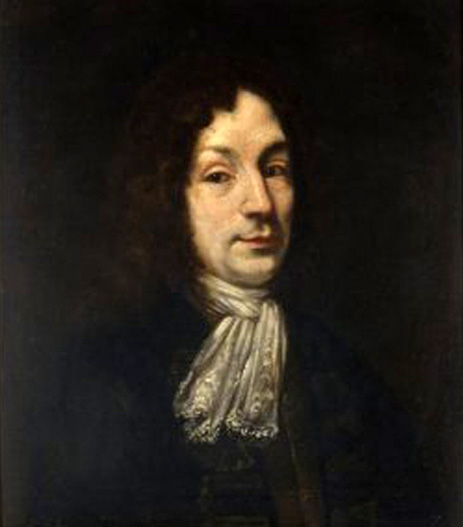
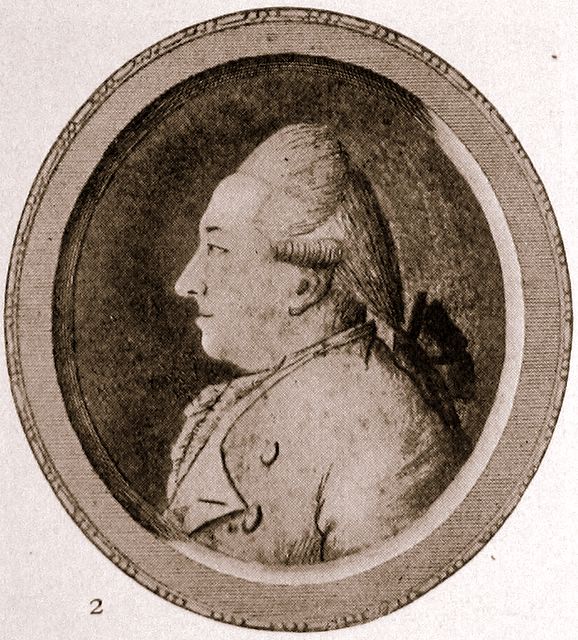
Luca Antonio Predieri Giuseppe Bonno
Francesco Algarotti, an intellectual confidant of Frederick II of
Prussia, is Metastasio’s correspondent, offering advice
and suggestions for his poetic compositions, and always
exhibiting his admiration and esteem for Italian opera.
In Paris, Carlo Goldoni dedicates the French edition of
his comedies to him, praising the greatness of his
dramas for music. Diderot, through Luigi de Cahusac,
asks him to write the entry on “melodrama” for the
Encyclopédie, although he never does. On various
occasions Voltaire expresses positive judgments, and one
which possesses relevant historical-hermeneutic interest
is on Metastasio’s musical dramaturgy: in the libretto
of the tragedie-lirique Sémiramis, he maintains
that “in La clemenza di Tito there are scenes to
be compared to the most beautiful of what has been
passed down to us from the Greeks, which are worthy of
Corneille when he does not declaim, of Racine when he is
not dull.”

Hofburg - NationalBibliothek
Ranieri
Calzabigi, in his “Dissertazione su Metastasio,”
introducing and editing the 1755 Parisian edition of the
works of the court poet, asserts the reciprocal
correspondence in Metastasio between poetry and music in
developing the sense and the emotions of beauty in the
public. Calzabigi, composing librettos for Gluck’s
operas in Vienna during the 1760's, enters into
competition with Metastasio and tries to dismantle his
fame and prestige, without ever succeeding, however.
For one, the role of Metastasio’s theatrical-musical
praxis, his aesthetic conception, the autonomy of the
poetic-musical work, cannot be diminished; but what
cannot be dismissed above all is the work of a poet who
represented the aesthetic-moral universe in which all
the men of the time recognized themselves, during the
period of reforms begun by Charles VI and developed by
Maria Theresa and Joseph II.
The strong
moral spirit with which Metastasio informed his entire
literary output makes his work not a mere continuation
or derivation of the humanism of the Italian courts
between the fifteenth and sixteenth centuries, but a new
expression of the individual’s power to create in
modernity, that is, of the more creative part of
each human being, evoked in his melodrama by Christian
values reinforced by the civil, social, and symbolic
tradition of classical literature, which is called to
new life in the visual arts of the seventeenth century.
The Gesamtkuntswerk (total art-work), which
Metastasio pursues in Italian opera through scenic
stage-directions that serve as true and fitting
explanatory guides for the stage-director,
re-elaborates the mark of the painting masters who
helped form him as a young man (Giambattista and
Giandomenico Tiepolo), and is integrated almost
perfectly with architects/stage-designers in European
theaters in their representations of Italian opera.
Theatricality as a perfect re-invention of nature–the
mere imitation of which Metastasio rejected–is united
with the languages of arts that pursue the same end,
representing and reconstituting the space in which these
arts narrate the truthful creation of the good and the
beautiful. The importance of Metastasio’s work for the
Enlightenment philosophes and for Rousseau
himself consists in having represented, as the internal
critical conscience of the ancien régime, the
extreme limit reached by that world in guiding the
universal desire for greatness and justice of the
peoples and social classes of the Empire, giving it form
in visible and practical values-- no longer deforming
its nature by producing deception and self-deception.
MARIO VALENTE
Biography
Born in Rome, 3 January
1698, to Felice and Francesca Galastri on via dei
Cappellari (Campo de’ Fiori).
His
father is a merchant of foodstuffs. In June 1702 his
mother dies suddenly. Felice Trapassi is re-married not
long after to Angela Lucarelli. Pietro is educated by
Gian Vincenzo Gravina, who translates his surname
Trapassi into its Greek form, Metastasio; in 1724 he
composes his first melodrama, Didone abbandonata,
establishing himself as the most important poet for the
musical theater of the day. In 1730 he moves to Vienna,
and is named Poeta Cesareo (Court Poet) by
Charles VI, succeeding Apostolo Zeno. In the decade
1730-1740 he composes masterpieces like Adriano in
Siria and La clemenza di Tito, which give him
primacy as the librettist most often put to music. He
teaches singing and acting first to Maria Theresa, and
then to her sons, Leopold and Joseph, future emperors.
He composes dramas for music for the court of Madrid
between 1751-56, thanks to the singer Carlo Broschi “Farinelli,”
who is taken on at the Spanish court in the same role
Metastasio held in Vienna. Up until the beginning of
the 1760s, his works are represented in all the European
theaters with the music of the greatest composers; the
autonomy of music from Metastasio’s poetic operas
attests to a continuous taste for his verses. A
correspondent of the greatest artists, writers, and
philosophers of the age, Metastasio, in the 1760s and
1770s, contributes to the reconciliation of Maria
Theresa with the Bourbons, maintaining epistolary
exchanges with intellectuals from Naples, such as
Eleonora de Fonseca Pimentel. Metastasio’s emotional
life in Vienna is bound to the contessa Marianna
Pignatelli d’Althann, from 1734 to 1755, after the death
of the singer Marianna Benti Bulgarelli, who inspired
his choice as the author of the melodrama. The last
Marianna in Metastasio’s life, Marianna Martinez,
herself a composer and singer, assists him until his
death in Vienna, after a brief respiratory illness, 12
April 1782. Buried at his request in the crypt of the
Michaelkirche, only several steps from his house at
Kohlmarkt, where for fifty-two years he was a guest of
the Martinez family, on the order of Charles VI.
Selected works
Collections
-
Poesie del Signor Abate Pietro Metastasio,
edited by Ranieri Calzabigi, 9 vols., Paris: Quillau,
1755
-
Poesie del Signor
Abate Pietro Metastasio,
10 vols., Turin: Stamperia Reale, 1757-1768
-
Opere del signor abate
Pietro Metastasio,
edited by Giuseppe Pezzana, 12 vols., Paris: Presso
la vedova Hérissant, 1780-1783
-
Opere di Pietro
Metastasio con dissertazioni e osservazioni,
16 vols., Nizza: Società Tipografica, 1785.
-
Dramas and Other Poems of the Abbé Pietro Metastasio,
translated by John Hoole, 3 vols., London: Otridge
& Son, R. Faulder, 1800
-
Opere,
edited by Fausto Nicolini, Bari: Laterza, 1912-1914
-
Opere scelte,
edited by Giulio Natali, Milan: Francesco Vallardi,
1934
-
Tutte le opere,
edited by Bruno Brunelli, 5 vols., Milan:
Mondadori, 1943-1954
-
Teatro,
edited by Mario Fubini, Milan-Naples: Ricciardi,
1968
-
Opere,
introduced by Franca Angelini, edited by Daniele Del
Giudice, Rome: Istituto Poligrafico e Zecca dello
Stato, 1999
-
Drammi per musica: Il
periodo italiano
1724-1730, edited by Anna Laura Bellina, vol. 1,
Venice: Marsilio, 2002
-
Drammi per musica:
Il regno di Carlo VI 1730-1740, edited by
Anna Laura Bellina, vol. 1., Venice: Marsilio,
2003
-
Drammi per musica:
L’età teresiana 1740-1771, edited by Anna
Laura Bellina, vol. 3, Venice: Marsilio, 2004
Writings
on Aesthetics
-
Estratto dell’Arte
poetica d’Aristotile e considerazioni su la medesima,
in P. Metastasio,
Tutte le opere,
edited by Bruno Brunelli, vol. 2,
1947.
-
Estratto dell’Arte
poetica d’Aristotile,
critical edition by Elisabetta Selmi, Palermo,
Novecento, 1998
-
Dell’arte poetica,
epistola di Quinto Orazio Flacco a’ Pisoni,
in P. Metastasio, Tutte le opere,
edited by Bruno Brunelli, vol. 2,
1947.
-
Invito a cena d’Orazio
a Torquato,
in P. Metastasio, Tutte le opere, edited by
Bruno Brunelli, vol. 2,
1947.
-
Osservazioni sul
teatro greco,
in P. Metastasio, Tutte le opere, edited by
Bruno Brunelli, vol. 2,
1947.
-
Satira III di
Giovenale,
in P. Metastasio, Tutte le opere, edited by
Bruno Brunelli, vol. 2,
1947.-1
Other
-
Memoirs of the Life and Writings of the Abate
Metastasio:
Translations of his Principal Letters,
edited
by Charles Burney, 3
vols., 1796
-
Memorie,
in P. Metastasio, Tutte le opere, edited by
Bruno Brunelli, vol. 2,
1947.
-
Metodo per lo studio
dell’italiano per l’arciduca Giuseppe,
in P. Metastasio, Tutte le opere,
edited by Bruno Brunelli, vol. 2,
1947.
-
Lettere,
1715-1757, in P. Metastasio, Tutte le opere,
edited by Bruno Brunelli, vol. 3,
1951.
-
Lettere,
1757-1770, in P. Metastasio, Tutte le opere,
edited by Bruno Brunelli, vol. 4,
1954.
Lettere,
1770-1782, in P. Metastasio, Tutte le opere,
edited by Bruno Brunelli, vol. 5,
1954.
-
“Dieci lettere inedite
di Pietro Metastasio”, edited by Mate
Zoric, Studia romanica et anglica
zagrabiensia, 21-22 (1966), 321-36
Further Reading
-
Accorsi, Maria Grazia,
“Etica nicomachea e Poetica nei primi drammi
‘italiani’ di Metastasio”, in La tradizione
classica nelle arti del XVIII secolo e la fortuna di
Metastasio a Vienna, edited by Mario Valente and
Erika Kanduth, Rome, Artemide, 2003.
-
Binni, Walter,
L’Arcadia e il Metastasio, Florence: La Nuova
Italia, 1963
-
Calzabigi, Ranieri,
Scritti teatrali e letterari, edited by Anna
Laura Bellina, Rome: Salerno Editrice, 1994
-
Giazotto. Remo,
Poesia melodrammatica e pensiero critico nel
Settecento, Milan, Bocca, 1952.
-
Gronda, Giovanna,
Le passioni della ragione: Studi sul Settecento,
Pisa: Pacini, 1984
-
Joly, Jacques, Les fétes théatrales de Métastase
a la cour de Vienne (1731-1767)
Clermont-Ferrand, Faculté des Lettres et Sciences
humaines, 1978.
-
Muraro,
Maria Teresa (Editor), Metastasio e il mondo
musicale, Florence, Olschki, 1986.
-
Neville, Don, “Moral Philosophy in the Metastasian
Dramas”, in Crosscurrents and the Mainstream
of Italian
Serious Opera 1730-1790.
A Symposium (11-13
February 1982),
edited by Don Neville, London, Ontario: University
of Western Ontario, 1982.
-
Pavone, Mario Alberto,
“Il panorama figurativo nella memoria critica del
Metastasio”, in La tradizione classica nelle arti
del XVIII secolo e la fortuna di Metastasio a Vienna,
edited by Mario Valente and Erika Kandut, Rome,
Artemide, 2003.
-
Sala Di Felice, Elena,
Metastasio: ideologia, drammaturgia, spettacolo,
Milan: Angeli, 1983
-
Strohm, Reinhard,
L’opera italiana nel Settecento, edited by Mario
Armellini, Venice, Marsilio, 1991.
-
Valente, Mario (editor),
Legge Poesia e Mito: Giannone Metastasio e Vico fra
“tradizione” e “trasgressione” nella Napoli degli
anni Venti del Settecento,
Rome: Aracne, 2001
-
Valente, Mario,
“Pietro Metastasio e Giacomo Noventa:
l’irresistibile fascino dei valori”, in Storia
del Candore: Studi in memoria di Nino Rota nel
ventesimo della scomparsa, edited by Giovanni
Morelli, Florence: Olschki, 2001
-
Valente, Mario, and
Erika Kanduth (editors), La tradizione classica
nelle arti
del XVIII secolo e la fortuna di Metastasio a
Vienna,
Rome: Artemide, 2003.
-
Valente, Mario,
L’inafferrabile felicità e il senso del tragico
“L’Olimpiade”, Metastasio e Cimarosa, Rome:
Artemide, 2003.
-
Vlad,
Roman, “Metastasio, Salieri e la scuola viennese”,
in La tradizione classica nelle arti del
XVIII secolo e la fortuna di Metastasio a Vienna,
edited by Mario Valente and Erika Kanduth, Rome,
Artemide, 2003.
Roma, 18 luglio
2013 Mario Valente
<
pagina precedente
5
|







